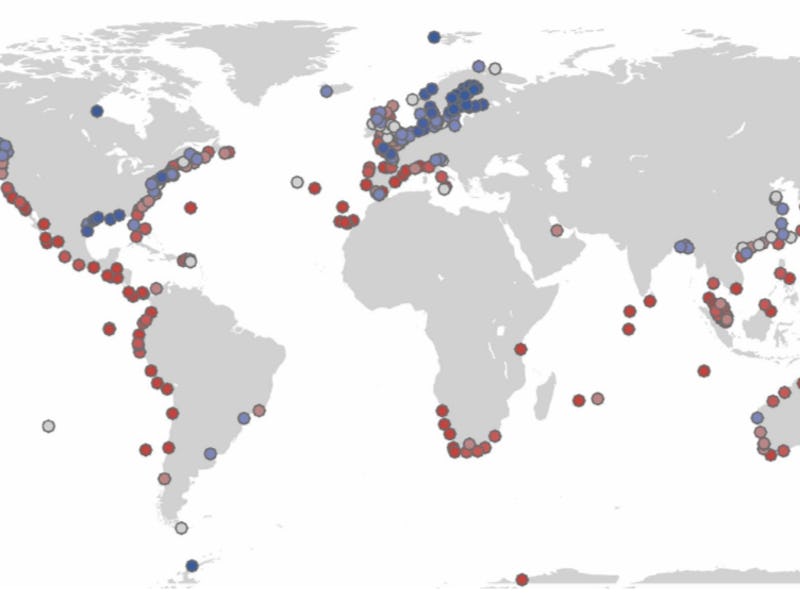New Map Shows Where Extreme Floods Will Be Normal by 2050
These parts of the world aren't ready for what's coming.

Thanks to climate change, the frequency of major flooding events is increasing at an alarming rate. While many cities are doing what they can to prepare for the upcoming deluge, new research suggests that they might not be prepared soon enough: In a new study in Nature Communications, scientists report that a flood level with a one-percent chance of occurring this year (also known as a 100-year flood) will, in some parts of the world, have a 50- or even a 100- percent chance of occurring in 2050.
That’s astonishing. And what’s worse still is that previous predictions have drastically underestimated how quickly flooding rates are changing on many of the world’s coastlines, including the United States’ Pacific coast.
In the new study, published Friday, scientists at the University of Central Florida used a new modeling technique to examine the future likelihood of extreme floods. “The likelihood increases faster than we previously understood,” Thomas Wahl, a civil engineer and the lead author of the research, tells Inverse.
Wahl and his research team, looking to improve on the predictive ability of existing flood models, developed a more flexible statistical model to estimate rates of future flooding. While previous projections only took into account the uncertainties around how sea levels will behave in the future, Wahl’s model also considers the uncertainties of what we think we know about extreme floods today.
These maps show how quickly flooding rates will rise on global coasts. The first map is according to the old model, and the second represents the new one. Red dots indicate where a flood with a one percent chance of occurring in a given year today will have a 10 percent or greater chance of occurring by 2050.
With the new method, the outcome shifts dramatically The old model underestimated predicted flood rates, in particular along the West Coast of both North and South America, in Southern Europe, and in Australia. But with Wahl’s new assessment, it appears that people on many more coastlines of the world will see extreme floods become common within a few decades.
Each year, the United States loses 82 lives and $8 billion to floods. If those numbers are bound to rise, we need to know how quickly that will happen in order to prepare for and prevent those damages. Getting it wrong, we’ve learned, has expensive and disastrous consequences. Unfortunately, many cities are equipped only with flooding protection systems that are already strained by 100-year floods. In areas where the floods are coming faster than previously thought, disaster managers won’t have much time left to react.
“Once policymakers decide to adapt, that does not mean that it is in place tomorrow; it takes a long time,” says Wahl. Major flood protection systems can take decades to plan and implement. “If we can show that by 2050 things are already so critical, that means we should probably not wait until 2045 to start thinking about it.”
Abstract
One of the main consequences of mean sea level rise (SLR) on human settlements is an increase in flood risk due to an increase in the intensity and frequency of extreme sea levels (ESL). While substantial research efforts are directed towards quantifying projections and uncertainties of future global and regional SLR, corresponding uncertainties in contemporaryESL have not been assessed and projections are limited. Here we quantify, for the first time at global scale, the uncertainties in present-day ESL estimates, which have by default been ignored in broad-scale sea-level rise impact assessments to date. ESL uncertainties exceed those from global SLR projections and, assuming that we meet the Paris agreement goals, the projected SLR itself by the end of the century in many regions. Both uncertainties in SLRprojections and ESL estimates need to be understood and combined to fully assess potential impacts and adaptation needs.